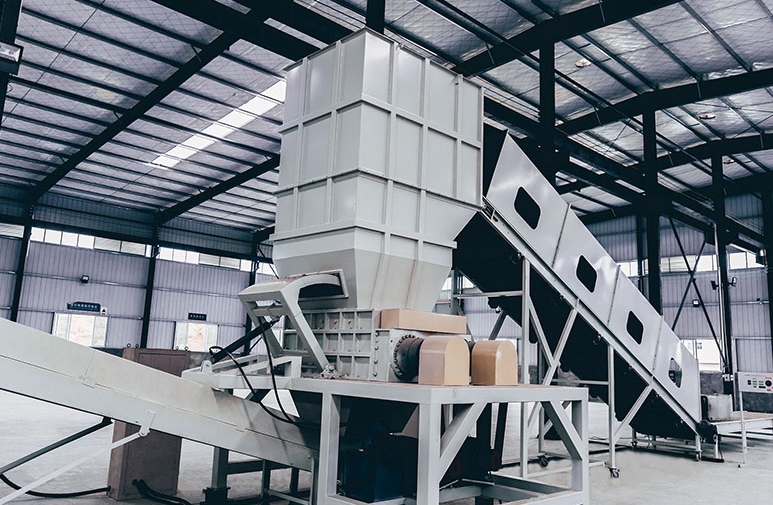The waste household appliance dismantling line adopts an all-physical dry recycling mode. Its core process is built around three key links: "electronic component dismantling - multi-stage crushing - precise sorting", with no chemical reagents involved throughout the process, realizing green treatment.
In the electronic component dismantling link, special automated equipment is used to dismantle waste household appliances. The key components such as circuit boards, motors, and compressors are mainly separated, while basic components like plastic casings and metal frames are initially classified. This lays a foundation for subsequent targeted treatment. During the dismantling process, equipment positioning and clamping devices are used to ensure the integrity and efficiency of component separation.
The multi-stage crushing link adopts the cooperative operation of a dual-shaft shredder and a granulator: first, the dual-shaft shredder crushes the dismantled circuit boards into block materials of 50-100 mm; then the materials are sent to the granulator for further refinement. Through the cooperation of high-speed rotating cutters and screens, the materials are gradually crushed into uniform particles of less than 20 mm. The particle size is precisely controlled by the screen aperture to ensure the subsequent sorting effect; the crushing equipment is equipped with an overload protection device to prevent damage to the equipment caused by impurities with excessively high hardness.
The precise sorting link adopts the combined technology of "air separation + high-voltage electrostatic separation": first, air separation equipment is used. Taking advantage of the density difference of particles of different materials, directional air flow is introduced to initially separate light non-metallic particles (such as resin and plastic) from heavy metal particles (such as copper and iron). The light particles are transported to the designated collection bin through the air flow; then the initially separated mixed metal particles are sent to the high-voltage electrostatic separator. By utilizing the difference in electrical properties of different metals in the high-voltage electric field, non-magnetic metal particles such as copper and aluminum are adsorbed on the electrode plate, while ferromagnetic metals are separately separated through the supporting magnetic separation device. Finally, precise sorting of various metals and non-metals is realized to ensure efficient separation of different materials.
In addition, to control the environmental impact during the process, the production line is equipped with a two-in-one dust removal system composed of a cyclone dust collector and a pulse dust collector: the cyclone dust collector first performs preliminary collection of dust generated in the crushing and sorting links to remove large particle dust; the remaining fine dust is treated by the pulse dust collector, which knocks down the dust attached to the surface of the filter bag into the ash hopper through high-voltage pulse injection, realizing efficient purification of dust; at the same time, the entire equipment is wrapped with a closed shell and sound insulation materials to control the noise transmission during operation, ensuring that the dust and noise emissions meet the relevant national environmental protection standards, and forming a complete process system of "process treatment + environmental protection support".
